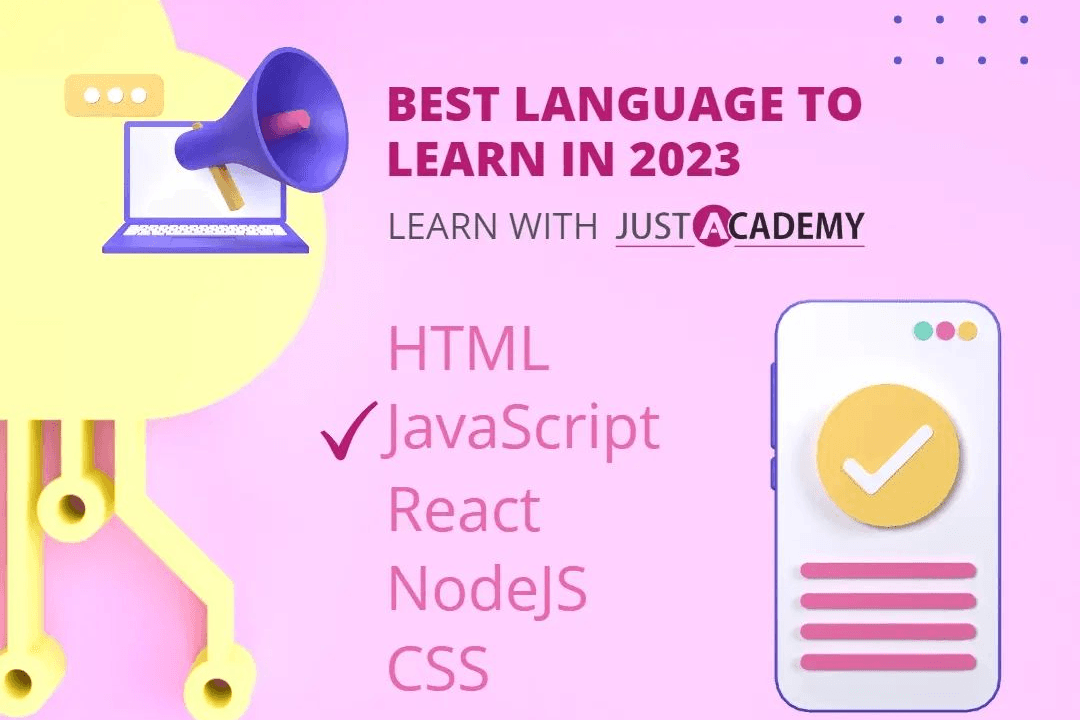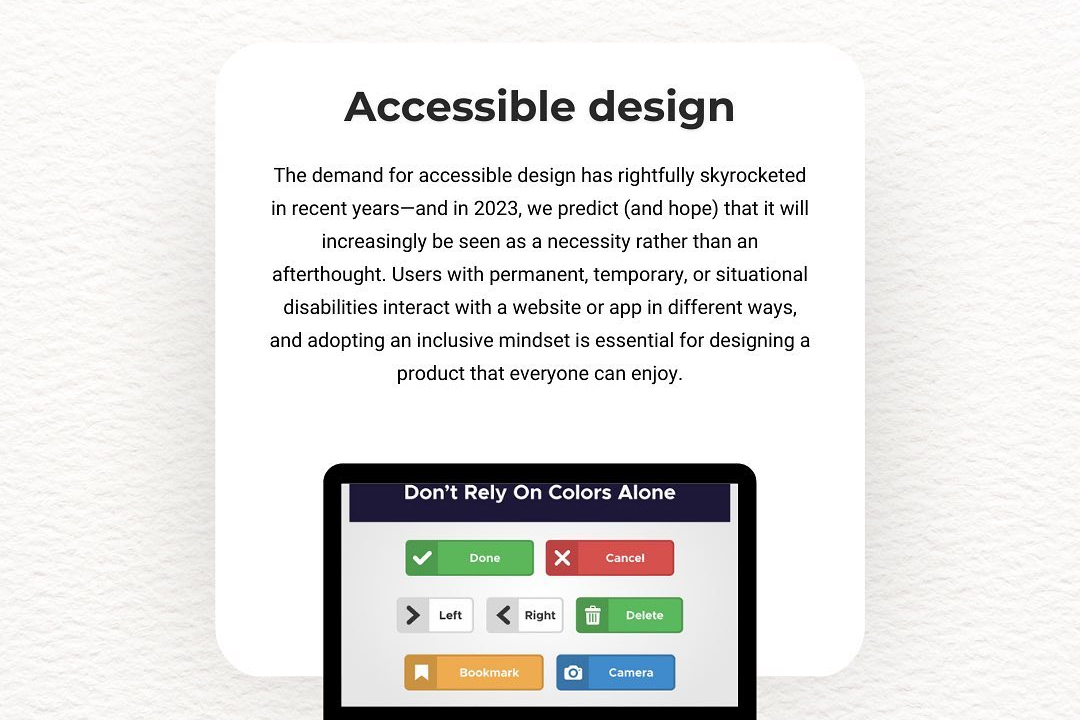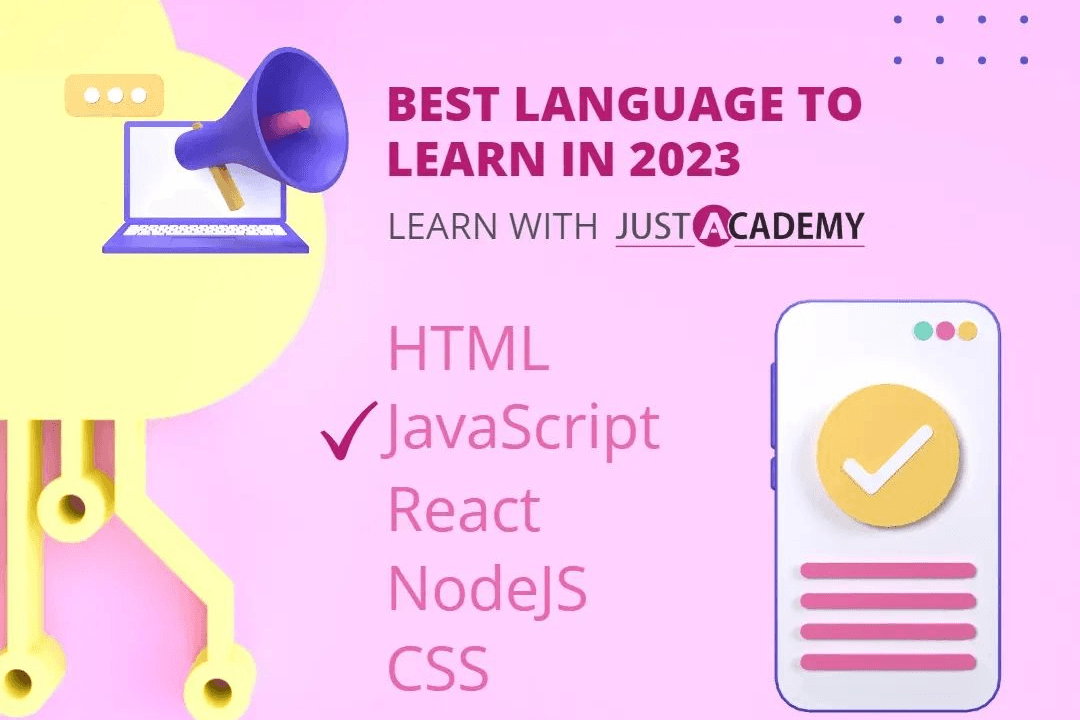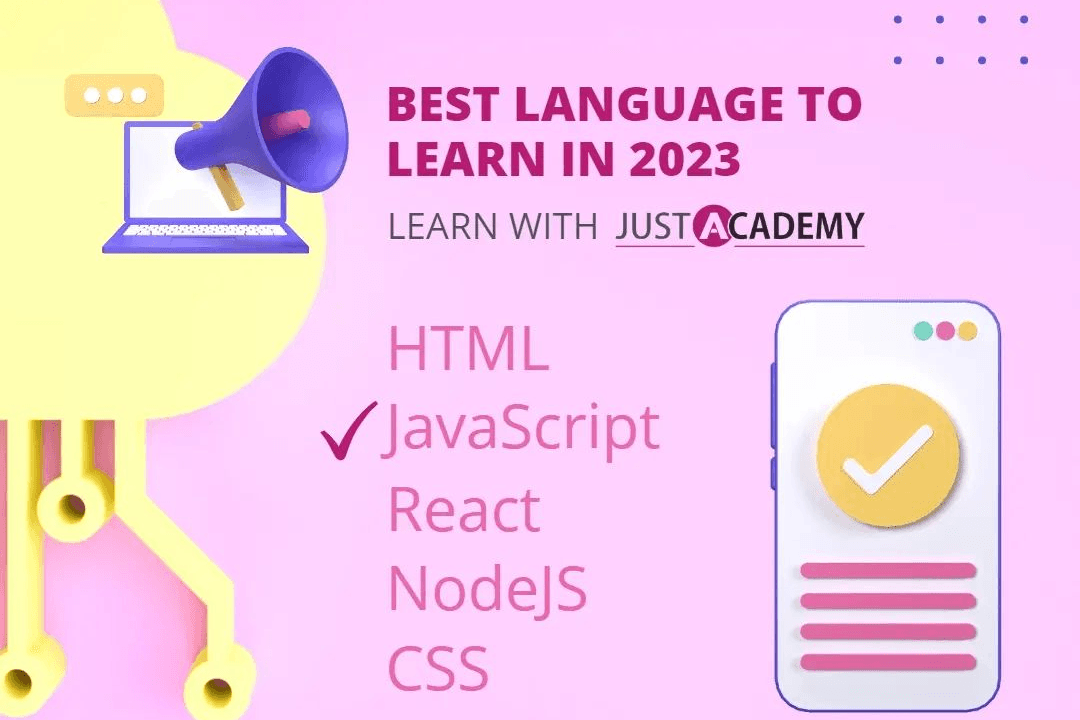Hello Word Programe In Php
The Hello World program in PHP is a simple script that displays the message "Hello World" on a web p
Hello Word Programe In Php
The “Hello World” program in PHP is a fundamental starting point for beginners to understand the basics of PHP programming. It demonstrates how to generate and display output on a webpage, helping learners grasp essential concepts like syntax, PHP tags, and embedding PHP code within HTML. This simple program serves as a foundational step toward building more complex web applications, making it an invaluable tool for those starting their journey in server-side scripting and dynamic web development.
To Download Our Brochure: https://www.justacademy.co/download-brochure-for-free
Message us for more information: +91 9987184296
The “Hello World” program in PHP is a fundamental starting point for beginners to understand the basics of PHP programming. It demonstrates how to generate and display output on a webpage, helping learners grasp essential concepts like syntax, PHP tags, and embedding PHP code within HTML. This simple program serves as a foundational step toward building more complex web applications, making it an invaluable tool for those starting their journey in server side scripting and dynamic web development.
Course Overview
The “Hello World Program in PHP” course introduces beginners to PHP scripting by guiding them through creating their first PHP script. It covers the basics of PHP syntax, embedding PHP within HTML, and outputting text on web pages. This course provides a solid foundation for understanding server-side scripting and paves the way for developing dynamic websites.
Course Description
Learn to create your first PHP script with the “Hello World Program in PHP” course. This beginner-friendly course covers PHP basics, syntax, and how to display messages on web pages, laying the foundation for dynamic web development.
Key Features
1 - Comprehensive Tool Coverage: Provides hands-on training with a range of industry-standard testing tools, including Selenium, JIRA, LoadRunner, and TestRail.
2) Practical Exercises: Features real-world exercises and case studies to apply tools in various testing scenarios.
3) Interactive Learning: Includes interactive sessions with industry experts for personalized feedback and guidance.
4) Detailed Tutorials: Offers extensive tutorials and documentation on tool functionalities and best practices.
5) Advanced Techniques: Covers both fundamental and advanced techniques for using testing tools effectively.
6) Data Visualization: Integrates tools for visualizing test metrics and results, enhancing data interpretation and decision-making.
7) Tool Integration: Teaches how to integrate testing tools into the software development lifecycle for streamlined workflows.
8) Project-Based Learning: Focuses on project-based learning to build practical skills and create a portfolio of completed tasks.
9) Career Support: Provides resources and support for applying learned skills to real-world job scenarios, including resume building and interview preparation.
10) Up-to-Date Content: Ensures that course materials reflect the latest industry standards and tool updates.
Benefits of taking our course
Functional Tools
1 - PHP Development Environment: Students learn to set up a PHP development environment using tools like XAMPP, WAMP, or MAMP. These packages include Apache server, PHP, and MySQL, providing an all in one platform to run PHP scripts locally on their computers. Mastering the environment setup is crucial for developing, testing, and debugging PHP programs efficiently. Students become familiar with configuration settings and troubleshooting common issues related to server setup and environment compatibility. This foundational step ensures they can smoothly transition from theory to practical coding with minimal disruptions. Creating a stable environment lays the groundwork for more complex projects and enhances confidence in handling real time development scenarios.
2) Code Editor: The course introduces students to popular code editors such as Visual Studio Code, Sublime Text, or PHPStorm. These editors offer syntax highlighting, code auto completion, debugging tools, and integrated terminal options that streamline the coding process. Learning to use an efficient code editor helps students write clean, organized code and facilitates faster development cycles. Features like plugin support and customizable interfaces allow practitioners to tailor their workspace for maximum productivity. Mastering a code editor is vital for maintaining code quality, debugging errors swiftly, and managing project files effectively as they progress to more advanced PHP programming.
3) Web Browsers: Students are guided on how to test and view their PHP scripts in web browsers like Google Chrome, Mozilla Firefox, or Microsoft Edge. Browsers serve as the primary tools for rendering PHP generated webpages and checking the visual and functional aspects of their code. Effective use of developer tools within browsers helps in inspecting elements, debugging JavaScript, and monitoring network activities, which are essential for troubleshooting. Understanding how PHP scripts interact with front end technologies and how to interpret browser response errors helps students optimize their code and improve user experience. Regular testing in multiple browsers ensures cross browser compatibility, a key aspect of professional web development.
4) Command Line Interface (CLI): The course emphasizes the use of command line tools like Terminal on Mac or PowerShell on Windows for executing PHP scripts directly. This approach enhances understanding of PHP's CLI capabilities, enabling students to run scripts without a browser, which is essential for automating tasks and running background processes. Learning commands like invoking PHP scripts, managing files, and configuring server settings via CLI grants students greater control over their development environment. Familiarity with command line tools also prepares learners for working with version control systems like Git, a vital skill in collaborative and professional software development.
5) Version Control System: Students are introduced to Git to manage and track changes in their PHP projects. Git allows them to maintain different versions of their codebase, collaborate with others, and revert to previous states if necessary. They learn key commands such as commit, push, pull, branch, and merge, which facilitate organized and efficient code management across development stages. Integrating Git into their workflow ensures a structured approach to project development, reduces errors, and simplifies collaboration in team environments. Understanding version control is indispensable for maintaining code integrity, especially when working on complex applications or contributing to open source projects.
6) Documentation and Resources: The course highlights the importance of using official documentation, online forums, and coding manuals to reinforce learning. Resources like the PHP manual, Stack Overflow, and Codecademy provide supplementary guidance and troubleshooting support. Students learn to effectively search for solutions, interpret error messages, and apply best practices from trusted sources. Developing the skill to utilize documentation accelerates problem solving and deepens understanding of PHP functions and syntax. Access to high quality resources ensures students can independently troubleshoot issues, stay updated with PHP advancements, and continuously improve their coding abilities.
7) Localhost Server Setup: Students are taught how to configure and run a localhost server environment using tools like XAMPP, WAMP, or MAMP. This setup allows them to emulate a live server on their personal computers, enabling testing of PHP applications in an environment similar to production. Understanding how to manage localhost servers helps learners troubleshoot server related issues, configure virtual hosts, and simulate real world deployment scenarios. Proper setup ensures that students can develop and test dynamic websites and applications seamlessly before deploying to live servers, minimizing downtime and errors in later stages.
8) Database Connectivity: The course covers connecting PHP applications with MySQL databases using PHP's mysqli and PDO extensions. Students learn how to create databases, design schemas, and perform CRUD (Create, Read, Update, Delete) operations. Mastering database connectivity is essential for developing data driven applications, user authentication systems, and content management systems. They also learn best practices for secure database interactions, including parameterized queries and preventing SQL injection. This competence enables students to build robust, scalable, and secure web solutions that handle persistent data efficiently.
9) Debugging and Error Handling: The curriculum emphasizes debugging techniques, including using browser developer tools, PHP error reporting, and integrated debugging tools in IDEs. Students learn to identify, isolate, and fix errors in their code effectively. Error handling mechanisms such as try catch blocks and custom error messages are explored to improve application stability and user experience. Developing strong debugging skills reduces development time, enhances code quality, and prepares students for troubleshooting complex issues in real time projects, ensuring reliable and maintainable PHP applications.
10) Basic Security Practices: The course introduces fundamental security concepts relevant to PHP development. Topics include input validation, sanitization, session management, and protection against common threats like Cross Site Scripting (XSS) and SQL Injection. Students learn to implement secure coding standards and utilize PHP's built in security functions. Building awareness of security best practices ensures that their applications are resilient against attacks, fostering trust and safeguarding sensitive data. These skills are crucial for developing professional grade web applications that comply with industry security standards.
11 - Framework and CMS Introduction: Students gain an overview of popular PHP frameworks like Laravel, Symfony, and content management systems such as WordPress and Joomla. The course explains the advantages of using frameworks—such as MVC architecture, code reuse, and built in security—and demonstrates basic interactions. Familiarity with frameworks and CMS tools helps students accelerate development, enforce best practices, and adapt to industry trends. This foundational knowledge prepares learners to explore advanced development techniques and contribute effectively to projects using modern PHP ecosystem tools.
12) Deployment and Hosting: The training covers deploying PHP applications on live servers, including configuring hosting environments, setting up FTP/SFTP, and managing domain names. Students are guided through deploying code to shared hosting, VPS, or cloud platforms like AWS or Azure. They learn about environment variables, configuration files, and version deployment strategies to ensure smooth live launches. Understanding deployment procedures enables learners to launch their PHP projects professionally, handle version upgrades, and maintain their web applications securely and efficiently in real world hosting environments.
13) Optimization Techniques: The course includes strategies to enhance PHP application performance, such as code profiling, caching mechanisms (like OPcache), and database query optimization. Students learn how to identify bottlenecks and apply best practices for writing efficient, scalable code. These skills are vital for delivering fast loading websites and applications that can handle high traffic volumes without degradation. Optimization knowledge helps students build that are responsive, cost effective, and capable of providing a seamless user experience under varying loads.
14) Real Time Project Development: Throughout the course, students work on industry relevant projects, simulating real world scenarios. These projects encompass features like user registration, login systems, content management, and CRUD operations, enabling learners to apply learned concepts practically. Developing projects from scratch fosters problem solving, teamwork, and project management skills. It also creates a portfolio of work that can be showcased to potential employers or clients, boosting career prospects and entrepreneurial initiatives.
15) Continuous Integration and Testing: The curriculum introduces concepts of automated testing using tools like PHPUnit and continuous integration workflows with GitHub Actions or Jenkins. Students learn to write unit tests, integration tests, and perform code reviews to ensure code quality. Implementing testing strategies early in development reduces bugs, enhances reliability, and accelerates the delivery pipeline. Familiarity with CI/CD pipelines prepares students for modern DevOps practices and ensures their PHP projects meet professional standards for deployment and maintenance.
Browse our course links : https://www.justacademy.co/all-courses
To Join our FREE DEMO Session:
This information is sourced from JustAcademy
Contact Info:
Roshan Chaturvedi
Message us on Whatsapp: +91 9987184296
Email id: info@justacademy.co
The Complete React Native Course Create Beautiful Apps












